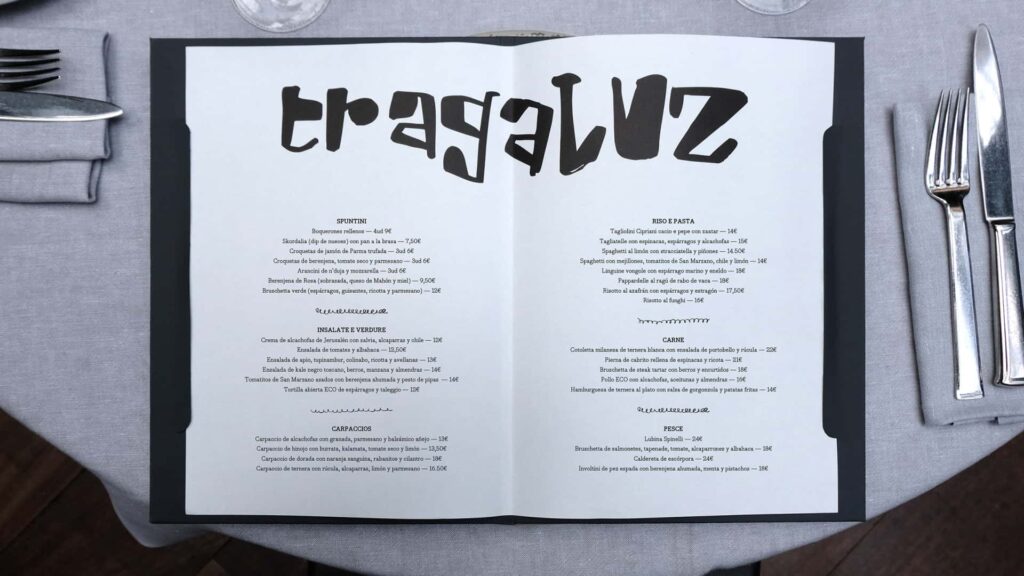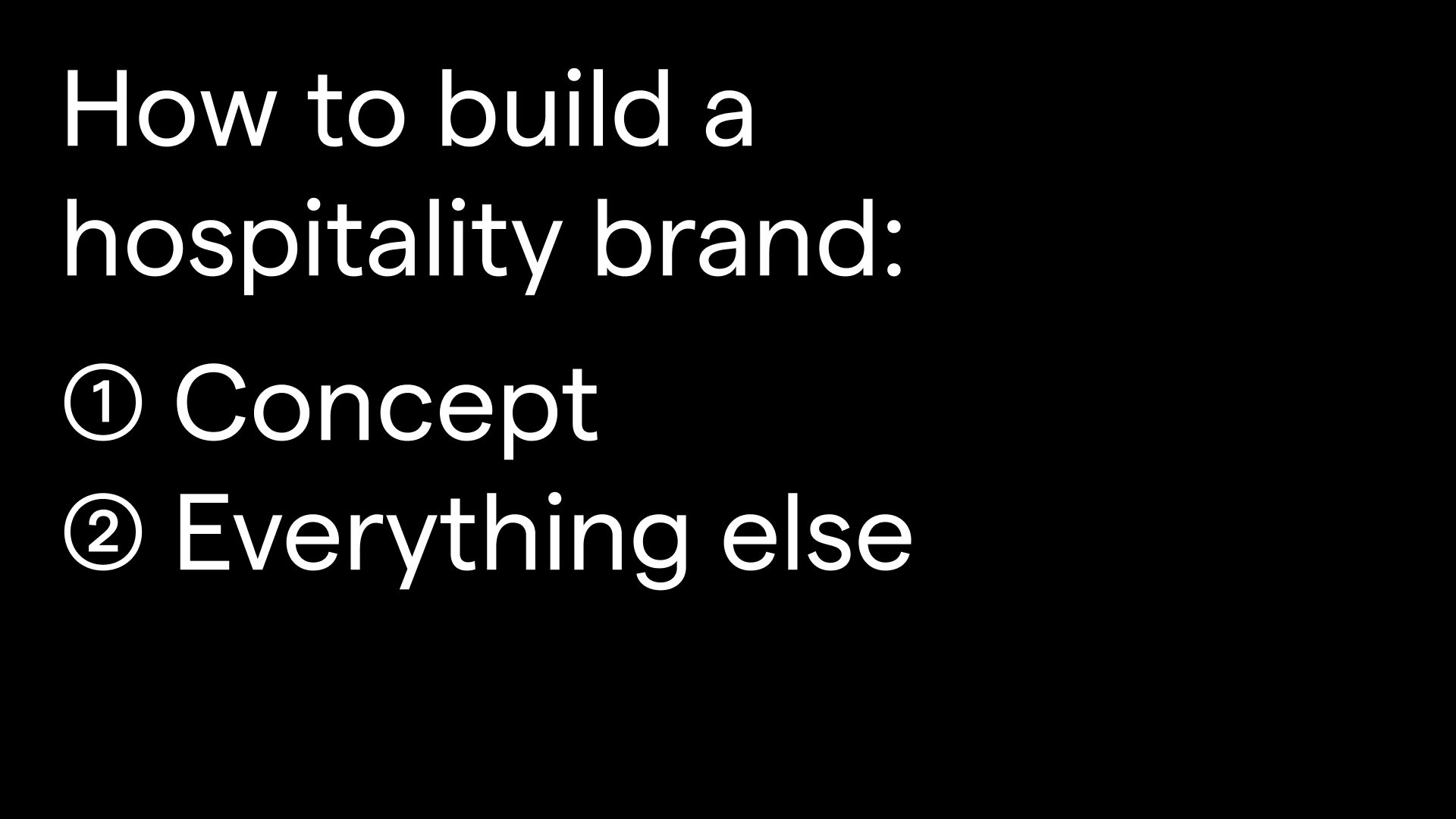Menus are the second thing guests consider when choosing somewhere to eat (right after salivating over those Instagram photos – we'll post about that another time).
But no matter how great your food, guests will choose to dine with you based on how well it's presented in your menu. If you're reading this and run a restaurant, bar or hotel – you already know this. The menu can be the difference between a table spending £25 per head or £30 per head; it's your main sales tool.
So how can the design and layout of your menus help make up that difference? Here are a few things we aim to apply to projects to help our clients sell their delicious dishes...
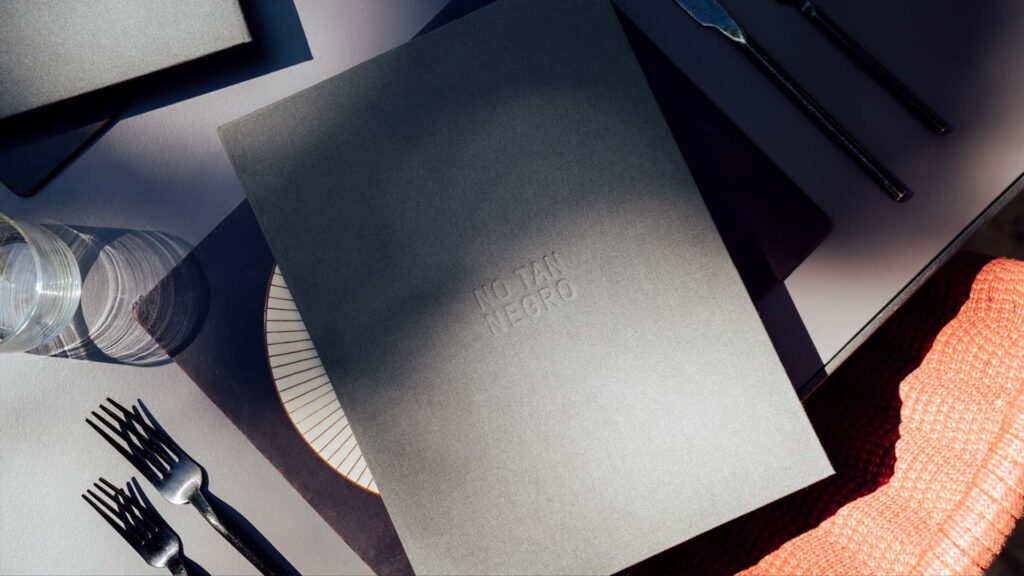
1. Less is more
It's a cliched saying, but somehow it always rings true. When it comes to menus, it’s important to have enough dishes on the menu that will satisfy most tastes, but too many and it can become cumbersome. No one wants to read a book before ordering. Make it concise, with clear sections. It'll benefit the design too.
2. Less menu is more menu
While the food menu is star of the show, most restaurants also have a drinks menu, wine menu, cocktails menu, dessert menu, between-hours menu, brunch menu and the list goes on. A library of menus. In our experience, the fewer menus that you can have, in as few formats as possible, the easier it’ll be not just for guests to navigate but also for your staff to keep track of.
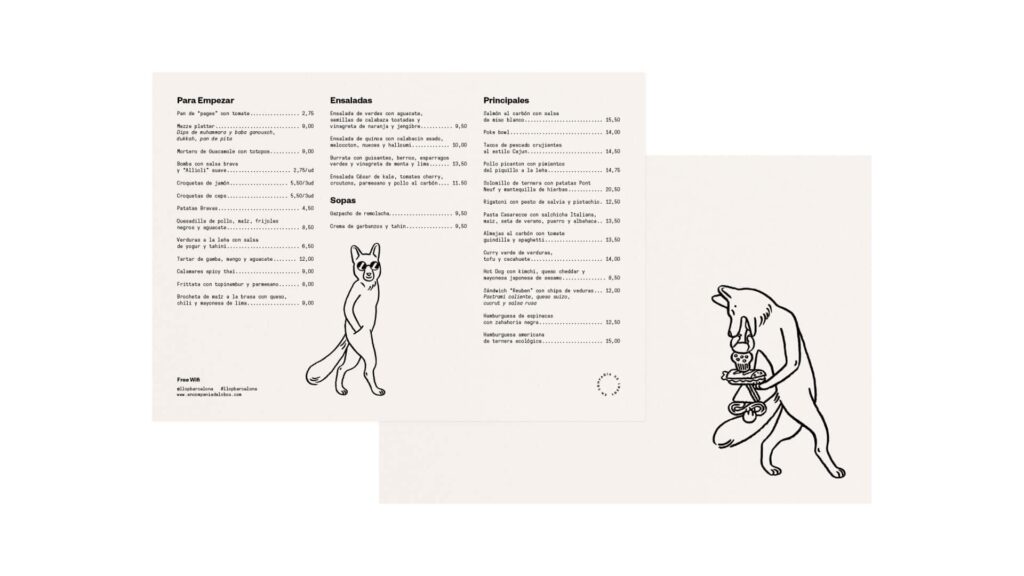
3. Personal preferences really matter
An allergen menu is increasingly important, as guests expect their personal preferences to be catered for when they go out. In Barcelona it’s legally required to have an allergen menu on the premises, but elsewhere in Europe that's not the case. If you’re a restaurant that prides itself on transparency, it can make sense for all menus to include allergens. We did this for the well-being café, Les Filles.

4. Your menu should set the tone of your restaurant
Menus have the ability to make a statement, to express who you are and to tell something of your story. For example, we loved how Doppietta names it’s cocktails after drivers from the Mille Miglia, the famous Italian race that inspired its identity.

5. Describe the menu as you'd want it to be described to you
We've seen a strange trend in listing out ingredients on menus as if served straight from a military kitchen. It's much more enticing if a plate is described in a sexy way, at the very least including a few well placed adjectives (crispy, creamy, drizzled, infused, etc). Emphasise the quality, and be sure to tell guests if you've gone to all that effort to locally or sustainably source a special ingredient.
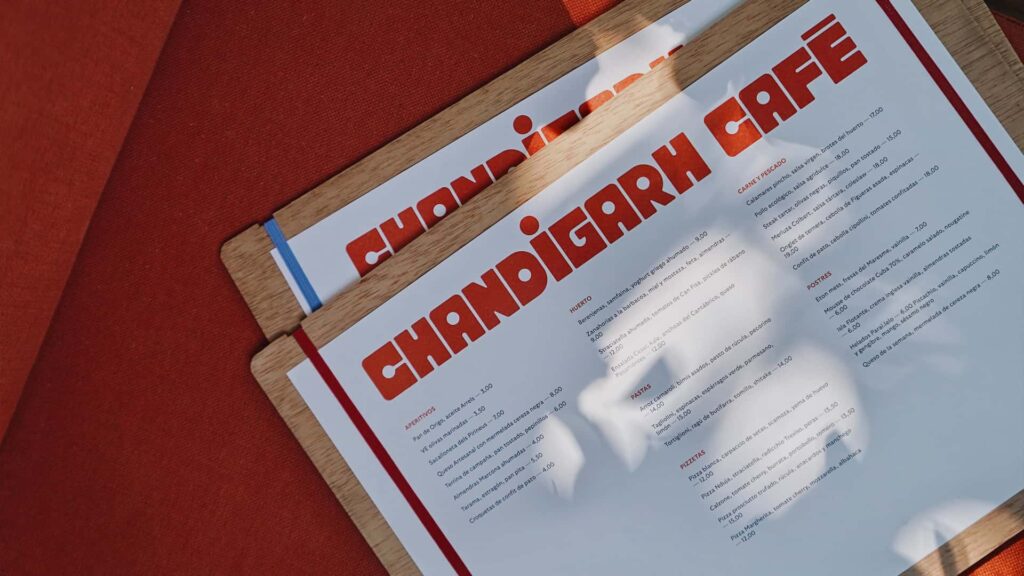
6. Hola, hello, bonjour
We live in a beautiful multicultural and multilingual society. In Barcelona, every restaurant caters for at least 3 languages: Spanish, Catalan & English. Helping staff differentiate between each one is key to a smooth service. At Chandigarh Café we used different coloured bands for each one. Simple, but effective.
7. Your menu is a key moment to tell your brand story
All menus can go beyond simply listing your dishes, it can set the whole tone of the meal. It can be a talking point, a conversation starter. It's the longest time you'll have to interact with your guest, so make sure it says something about your hotel, restaurant or bar. Because we all want to be remembered, right?
